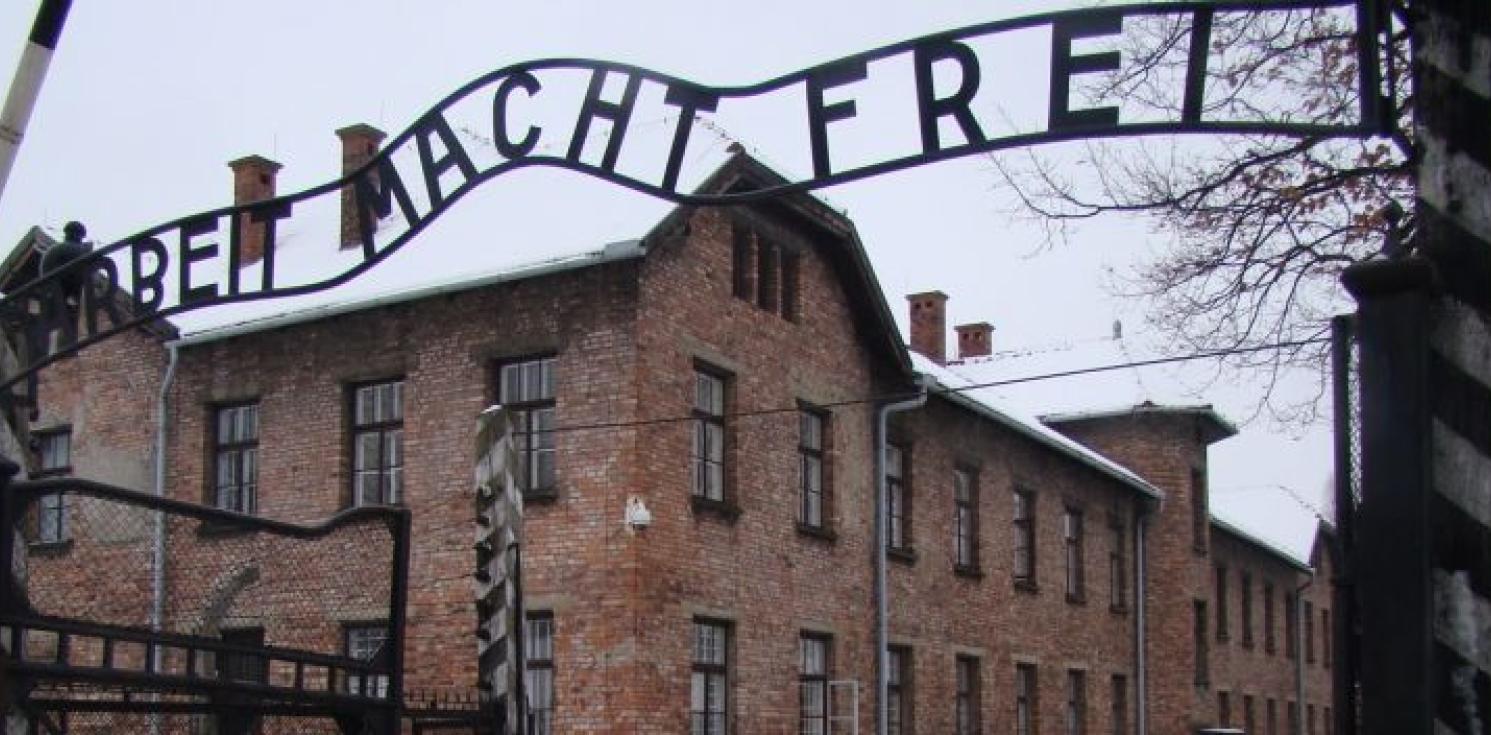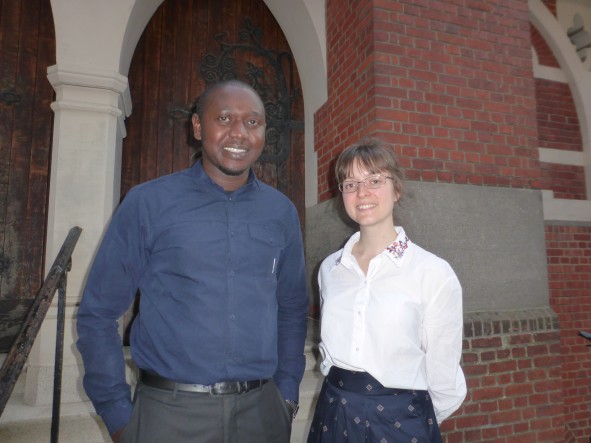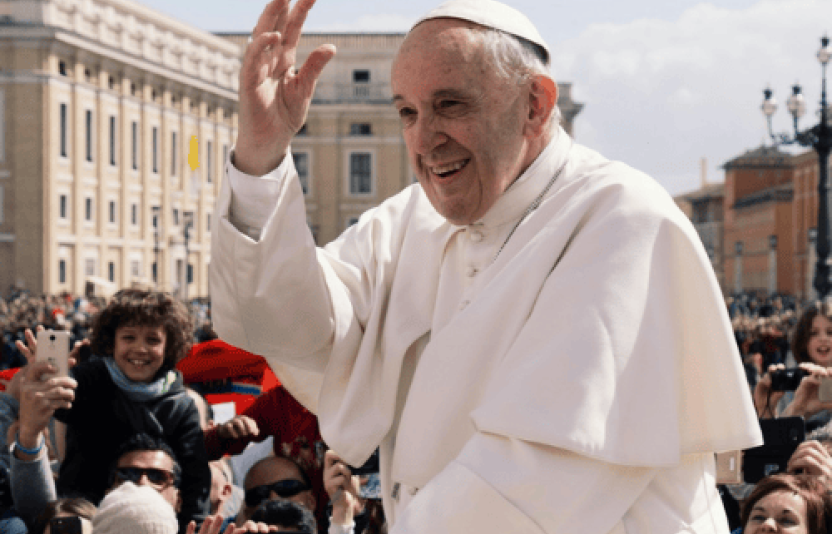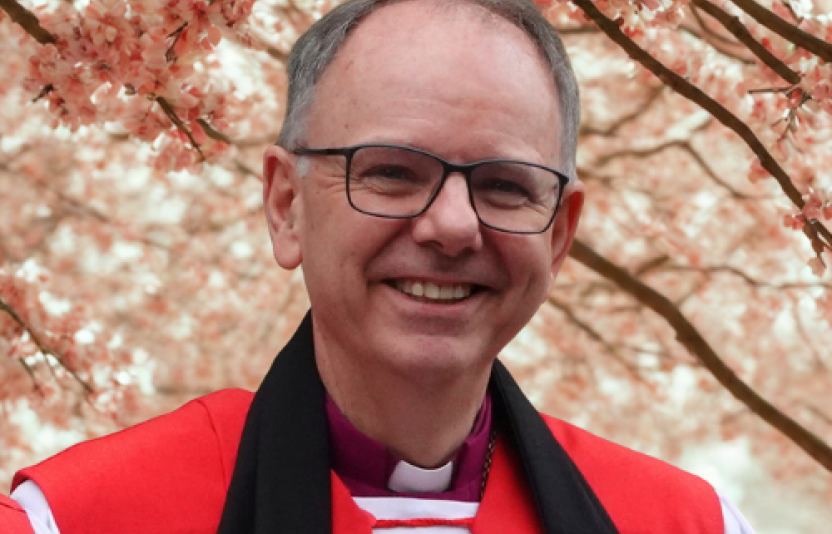Belgian Anglicans on official visit to Auschwitz

The Fédération Wallonie-Bruxelles (the administration of the French-speaking communities in Belgium) recently invited young people from the Recognised Religions in Belgium to participate in a journey to the death-camp at Auschwitz. From our chaplaincies in Brussels and Wallonia, Eric Sibomana (one of our stipendiary lay prison chaplains) and Amélie Lecoeuche (from Holy Trinity Brussels) were chosen to represent us on this highly significant interfaith day in a place of remembrance and horror.
This was an important building-block in establishing and maintaining warm relations and friendships across the Christian churches, Judaism, Islam and secularism, in an atmosphere of renewed anti-Semitic violence in Europe. Our diocese has its part to play in strong interfaith relations which are essential to Europe's future.
Amélie's notes on the trip follow:
Auschwitz 2 Birkenau Preparation Day
Notes based on the talks given at the preparation meeting the week before
- The trip was an activity organised as part of the programme encouraged by the Decret du 13 Mars 2009
- The Conseil chooses projects and organisations to support: supporting teaching, dialogue, collect witness accounts and provide resources.
- The Decret is to remember events such as war crimes, genocides, acts of resistance.
- Memory: moulds the identity of a society. By educating society via the transmission of memory, we educate the citizens on their collective past, give them the tools to analyse and understand the present, and thus take an active part in shaping the future. It is a crucial task for a community to perform in the context of the work required to maintain a society based on the principles of freedom, dialogue and democracy. How can we build bridges in society if we do not understand our own selves?
- We are living in a time where first hand witnesses of WW2 are disappearing, and with them a certain perspective of the events they experienced. Programmes such as the visit of Auschwitz 2 Birkenau is active within a framework to preserve these memories of events which had a profound effect on Belgian, European and worldwide history.
The Visit
Notes based on visiting the actual concentration camp/killing centre complex
The group – 150 participants in all – was composed evenly of Jews, Christians, Muslims, teachers and journalists/reporters. Our trip was intended as both a solemn act of memory and an opportunity for increased dialogue between coexisting communities.
The first thing that struck me was the gates. A tall, red brick building, with the railway line passing through the middle. You had to know what it was, or read the sign posts to recognise it: it could be taken for any kind of industrial site receiving goods by rail. In a sickening way, it was: many trapped within the concentration camps were used as slave labour to local industry. A cold feeling settled in my stomach at the realisation that for thousands of innocents this was the final point: the last thing they saw before crossing over into a hell where they were stripped of any identity, humanity, and in an atrocious number of cases, life.
Visiting the memorial outside the concentration camp was an odd, hybrid experience: surrounded by garden fences, family homes and children’s slides ran the remorseless rail tracks. On it, with a small explanatory plaque nearby, was railcar, illustrating the kind of vehicle wherein up to 70 or 80 people were crammed for their transport to Auschwitz.
As I listened to descriptions of journeys several days long in a locked box on wheels, with no food, water or hygienic facilities, and how numerous victims died before even reaching the destination, I met a young Muslim teacher. Her warmth, concern for others and vibrant liveliness made a stark contrast with the brutality of the acts we were hearing about.
Two things struck me about the visit to the concentration camp of Birkenau. It is a strongly impersonal place. It is in Auschwitz one – or so I am told – that you see the mountain of shoes, of personal items, of hair. It is there that you see the traces of the hundreds of thousands of lives forcibly left behind at the entry door. Apart from a few restored barracks used to explain the ‘living’ conditions to the visitors, all you see is semi-demolished chimneys. The buildings of the men’s camp (we did not visit the women’s, but you could see the rows of single-storey brick constructions beyond another row of barbed wire) were wooden: only the chimneys were brick, and most of these barracks long gone. However, the regularly spaced, crumbling stacks remain, each bearing witness to one of 300 structures, each holding hundreds of men. The magnitude is mind-numbing. To walk down the central alleyway – a walk of a kilometre – accompanied by endless rows of chimneys does not permit full comprehension of the camp. There comes a point where the mind cannot cope: they cease to be people and become numbers.
Or would have done, had it not been for the second striking event of the camp visit. As we trouped behind the guide, hearing explanations of bitter cold winds, endless mud, sickness, rats, starvation and beatings, a Jewish member of our party spoke up:
My father was here – he had a tattoo on his arm. My mother was here – she was liberated on a death march.
All at once, the events were about humans again. Even more, they were personal, recent, and for some of the group, tangible. We can all feel a tightness of horror and sadness at the thought of our own parents hurting and humiliated.
Reaching the end of the alleyway we encountered the ruins of two of the infamous gas chambers. Crumbling, surrounded by weeds, with the roof caved in and a fence telling visitors to come no nearer, it is impossible to see much of the inside. They are left in the state they were found after the Nazis departed, attempted to eliminate all traces of their crimes. One startling point is the dimensions of the gas chamber itself: we were told that it could slaughter 800 people at a time, yet it looks no bigger than a provincial train station waiting room.
A few metres further on is an enormous memorial dedicated to the dead, with words in many languages. It is a place of melancholy contemplation which, if not inviting prayer, at least encourages personal dedication to the defence of freedom, human rights and human dignity.
The end of the visit was a sort of conference inviting representatives of the different groups and communities to make short statements. Many wise words were said, and I note below only a snapshot of the thoughts aired:
- The monster within each of us could always emerge.
- Putting aside the concept of Christian, Jew, Muslim or Atheist, we are all Citizens and as Citizens we must defend democracy.
- We must be vigilant: loss of our values leads to an increase in intolerance.
- One day, our witnesses will no longer be here.
- Refreshing and preserving the memories of our society is necessary to understand the present and to be active in choosing the path of our collective future.
- Instead of surrendering to hatred, we must build, share and speak to one another.
- We are aware of the parallel existence of other communities near to ours, both lay and religious. But do we really live together? Do we really share in one another’s lives?
- Building on the visit to Auschwitz 2 Birkenau and the dialogue begun that day, can we continue to speak and share with other communities surrounding our own?
Eric's PowerPoint of his experiences can be found here:

Eric & Amélie.


